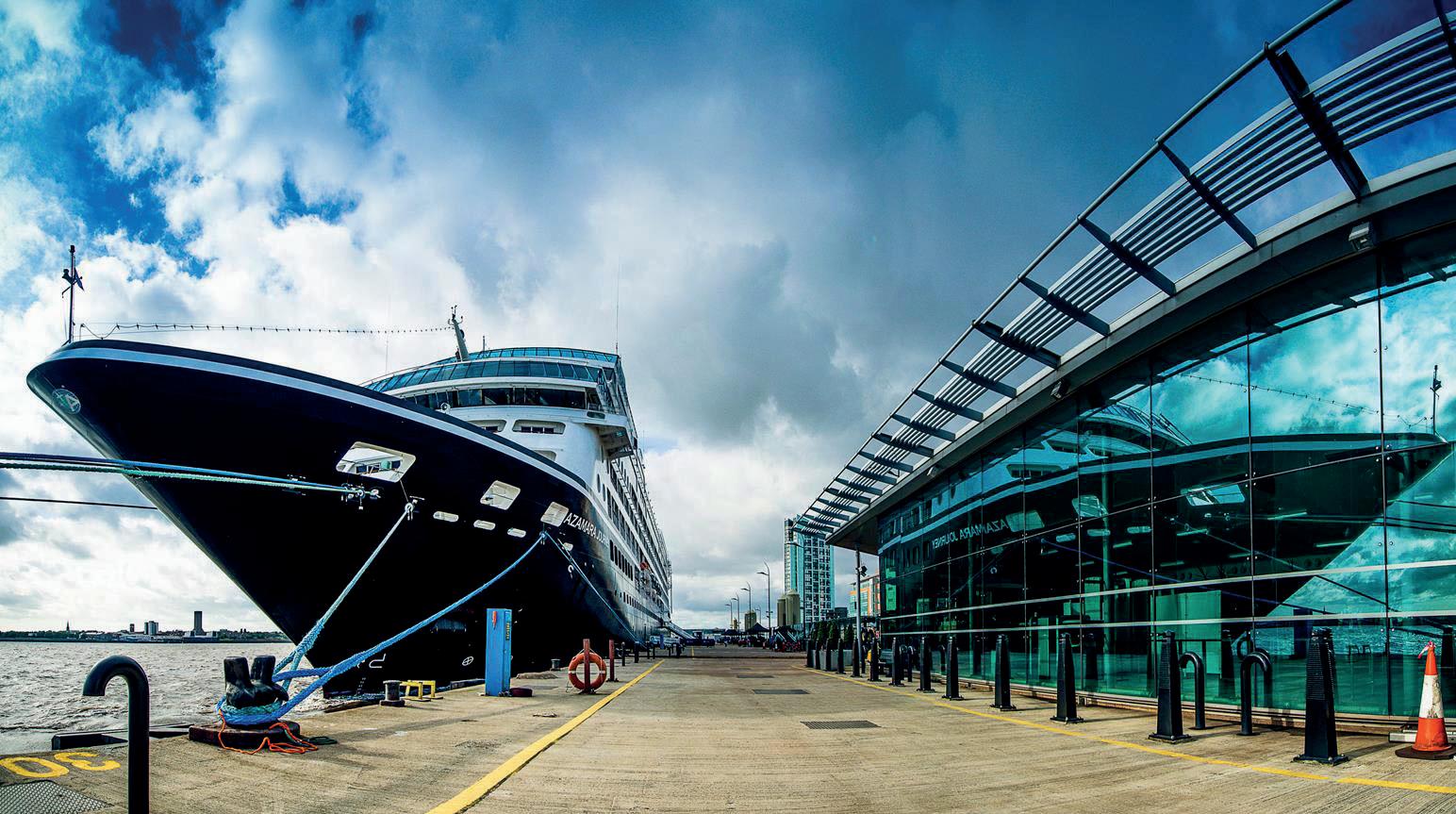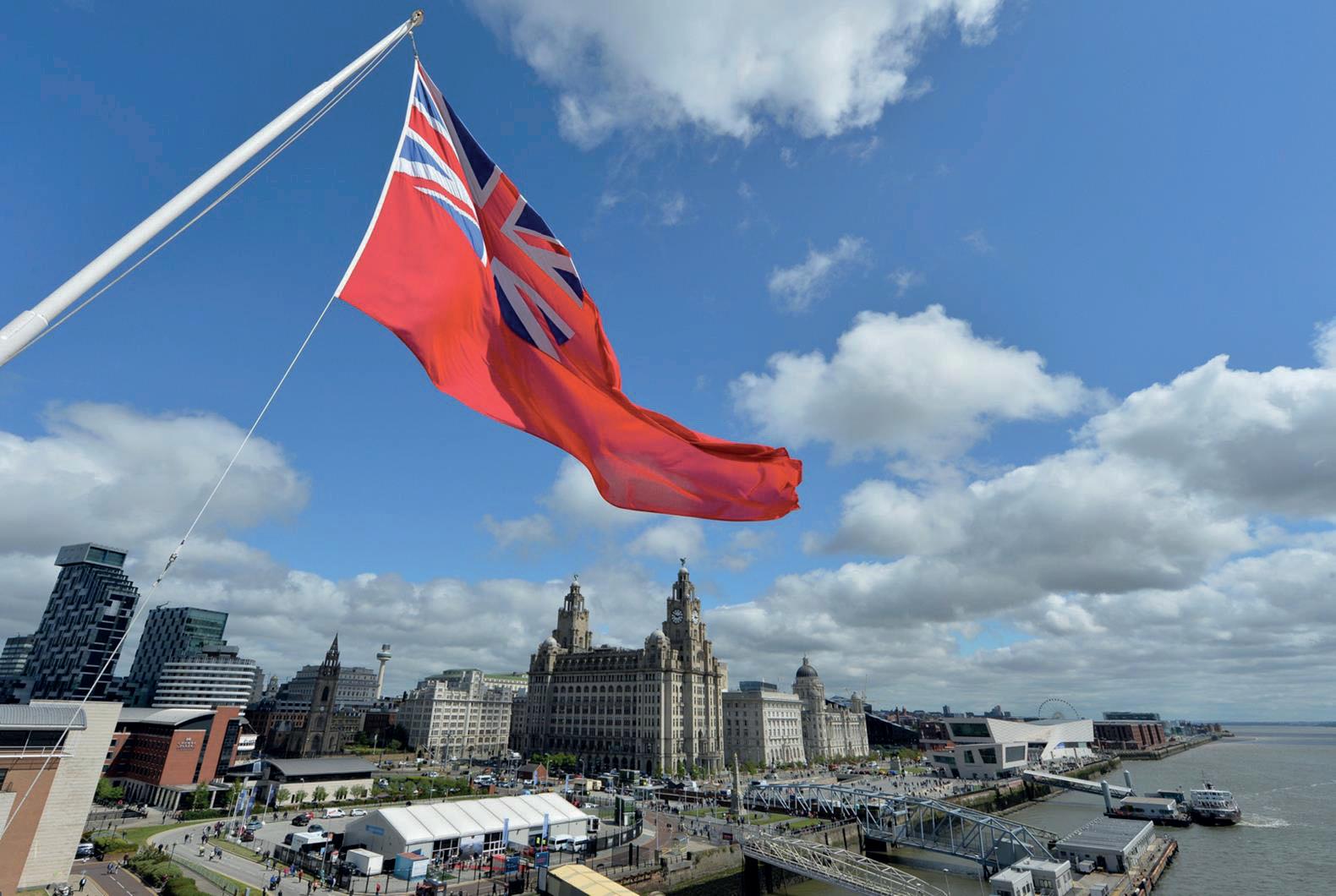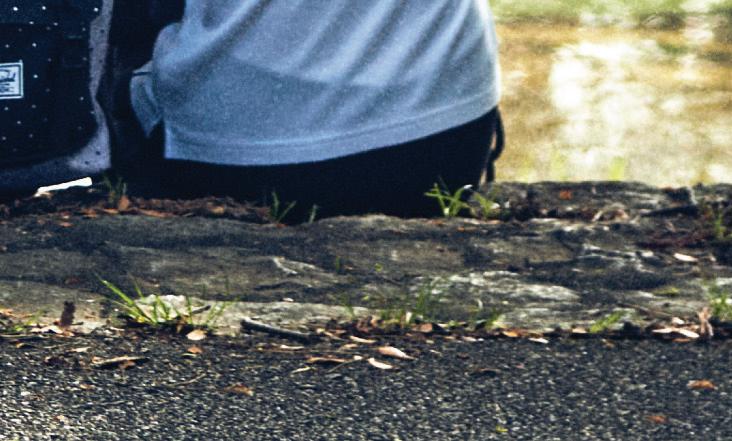
7 minute read
Cruise
PLANNING FOR GREEN CRUISE GROWTH
Growing sustainable cruise facilities always requires balancing the interests of multiple stakeholders, writes Michele Witthaus
Photo: Cruise Liverpool
Involving multiple stakeholders means complex decisions to be made about the competing demands of environmental targets and economic growth.
Where cruise facilities are embedded in the heart of a major city, sustainability goals need to take into account the high visibility of the cruise business and its perceived impacts on the life of the city and wider region.
Port-city perks
In the Peel Ports-owned Port of Liverpool, around 700,000 visitors have stepped off cruise vessels into the city since 2007. The cruise business in Liverpool has recovered well after the Covid-19 hiatus, with the 2021 season seeing calls by more than 100 cruise ships (bringing 80,000 passengers to the city).
Visiting ships dock in Liverpool’s historic waterfront, allowing for an immersive visitor experience as soon as guests step off their ships. The accessibility of city centre amenities is unique among the UK’s cruise ports, with most other UK terminals situated at a further distance from city centres and their attractions.
Cruise Liverpool, which runs the terminal, states that by 2023, it will have facilitated 500 cruise calls, welcomed one million passengers and crew and generated an economic impact of GB£72 million in total since inception. The organisation has plans to expand on this successful track record by building a new dedicated cruise terminal.
These plans have encountered delays as the terminal’s potential impact on the city’s climate targets, in particular its Net Zero ambition, is considered. The existence of high enough long-term demand to justify bigger facilities will also affect whether the planned expansion gets the go-ahead. Meanwhile, a decision on whether the new development will get the green light, expected in 2023, has been postponed to 2024.
“Being as sustainable as possible is a key focus of our team but there will always be challenges you will have to face along the way,” says John Mawer, head of cruise operations at Cruise Liverpool.
“Cruise terminals naturally target yearly growth of cruise traffic because that is an important contributor to the Liverpool region and a platform for further job creation, but that means you always need to consider how to keep your operations as sustainable as possible to balance that out.”
To do this, Cruise Liverpool is active on many fronts simultaneously. “We always keep up with the latest industry developments so that we can facilitate new-generation cruise vessels’ requirements in port and ensure that supply chain and subcontracted partners are moving at a similar pace in order to support those sustainability goals,” he says.
Green developments
Cruise Liverpool is currently considering a wide range of developments to enhance the green profile of its facilities.
Mr Mawer explains: “At Liverpool Cruise Terminal we will be conducting feasibility studies into infrastructure improvements to facilitate sustainability, based on the volume of expected traffic and the specific requirements for power and bunkering.”
“We’re working closely with our waste management team to ensure a Zero to Landfill policy for cruise waste and to increase our recycling capacity. Our work will also align with Liverpool City Council’s Major Joanne Anderson’s ‘triple lock’, which has a focus on people, the planet and equality.”
8 A cruise ship berthed in the Port of Liverpool

Taken together, it is expected that these interventions will contribute to improving the sustainability of the wider Port of Liverpool, and the city and region, in the coming years. “By increasing our capacity for recycling, we aim to conserve energy, reduce air pollution and conserve natural resources,” says Mr Mawer. “Our teams are also aiming to swap our fleet to purely battery power operated vehicles to reduce the port’s overall emissions.”
“We further aim to incentivise port calls for ships with lowemission propulsion systems. With the ambition of attracting and supporting the greenest ships to Liverpool, we may offer discounts to vessels that meet industry emission reducing targets, wishing to call at Liverpool on multiple occasions.”
Partnerships are a significant part of Cruise Liverpool’s sustainability initiatives. “We have a collaborative and open approach to working with our partners and shareholders to ensure sustainable cruise tourism,” says Mr Mawer. “There’s a focus on education, whether that’s of staff, stakeholders or service users. We’re committed to sharing information, hosting workshops and joining or contributing to memberships of groups specifically directed towards green initiatives.”
The organisation is currently working with Liverpool John Moores University (LJMU) and boatyard and marine services company Bluepoint Marine on a sustainability project at the port.
New tech
Mr Mawer says: “The cruise sector is investing heavily into new tech and innovation to enable us to sail into a greener future. We plan to explore efficiencies with key stakeholders in the hope that we can jointly promote positive messages and steps forward in the cruise industry in this area. We have recruited an academic from the University of Liverpool for one year and the aim is to produce a paper which considers the current and future movement towards Net Zero in order for Liverpool Cruise Terminal to map out short, medium and long term goals for sustainability.”
He adds that there will also be a focus on aligning with the targets set out by the UK Government’s Maritime 2050 strategy. The strategy prioritises clean maritime growth with a focus on themes including competitive advantage, environment, infrastructure, people, security, technology and trade.
In the short term, Mr Mawer says, “the aims are to look at current operations and changes that are possible now. These include recycling and reduction of disposable plastics, engaging with suppliers, moving to a paperless office, and educating staff on the importance of being as sustainable as possible. “Other initiatives include hybrid working to reduce commutes, encouraging cycling to work and other greener methods of commuting, installing LED lightbulbs throughout our facility, and not using unnecessary lighting or heating in unused areas.” In the medium term, the port is concentrating its attention on plans for the next five to ten years, including strategies to develop infrastructure and harnessing alternate power and l John energy supply, as well as carrying out feasibility studies into rvices solar, wind or tidal power to help power part, or all, of the at the facility. “This will ensure that our facilities are fit for purpose to service new generation ships with newer technologies. For the longer term, our focus is on being ready for 2050,” he says. y into eener olders sages e have ool for siders order m and th the 2050 h with ntage, ology develop infrastructure and harnessing alternate power and energy supply, as well as carrying out feasibility studies into solar, wind or tidal power to help power part, or all, of the facility. “This will ensure that our facilities are fit for purpose to service new generation ships with newer technologies. For the longer term, our focus is on being ready for 2050,” he says.

8 View of the cruise terminal at the Port of Liverpool from a visiting cruise ship
8 John Mawer, head John Mawer, h of cruise operations of cruise operat at Cruise Liverpool at Cruise Liverp
port ion n
Photo: Cruise Liverpool






The Partner for Sustainable Change















